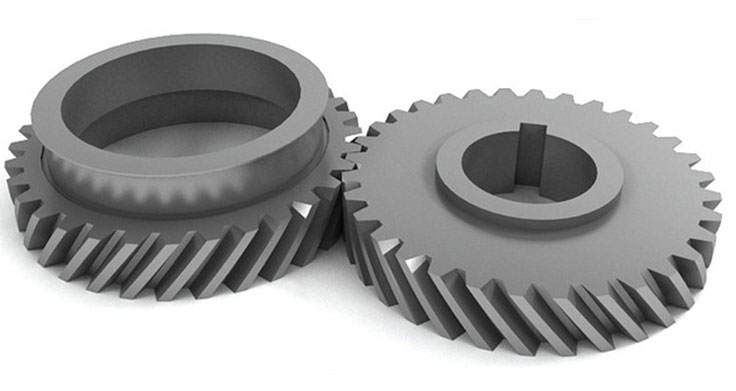
Helical gears play a vital role in robotics, enabling smooth and accurate motion control for various robotic systems. Their helical tooth design and other characteristics make them well-suited for critical robotic applications. Here’s how helical gears contribute to smooth and accurate motion control in robotics:
1. Smooth Tooth Engagement:
- The helical tooth design of these gears allows for gradual tooth engagement during meshing. Unlike spur gears with abrupt engagement, helical gears provide smoother transitions between teeth, minimizing sudden changes in motion and reducing vibrations during operation. This smooth tooth engagement results in less noise and wear, leading to improved motion control.
2. Reduced Noise and Vibration:
- The gradual meshing action of helical gears reduces gear noise and vibrations during operation. In robotics, where precision and quiet operation are essential, the low noise levels contribute to a better working environment and enhanced user experience.
3. High Efficiency:
- Helical gears offer high efficiency due to their helical tooth design and optimized tooth contact pattern. The efficiency ensures that a larger portion of the input power is efficiently transmitted to the output, contributing to precise motion control with minimal energy losses.
4. Load Distribution:
- The helical tooth design allows for multiple teeth to be in contact simultaneously, leading to better load distribution along the tooth surface. This feature enables helical gears to handle higher torque and loads efficiently, making them suitable for robotic applications with varying operational demands.
5. Bidirectional Rotation:
- Helical gears can transmit power smoothly and efficiently in both directions of rotation. This bidirectional capability is particularly advantageous in robotics, where motors may need to reverse direction quickly for precise movements.
6. Backlash Reduction:
- Compared to some other gear types, helical gears exhibit lower backlash. Reduced backlash leads to more precise and predictable motion control, enhancing the overall accuracy and reliability of robotic systems.
7. Compact and Lightweight Design:
- Helical gears can be designed to be compact and lightweight, making them suitable for integration into robotic joints and actuators without adding excessive weight or bulk to the robot.
8. Versatility in Robot Types:
- Helical gears can be employed in various robot types, including industrial robots, collaborative robots (cobots), robotic arms, and mobile robots. Their smooth operation and precise motion control capabilities make them adaptable to different robotic applications and environments.
9. High Torque Transmission:
- Helical gears can handle high torque loads, making them suitable for robotic applications that require robust power transmission capabilities, such as heavy lifting or manipulation tasks.
Helical gears are crucial components in robotics, providing smooth and accurate motion control with reduced noise and vibration. Their high efficiency, load distribution capability, bidirectional rotation, and reduced backlash contribute to precise and reliable motion control, making helical gears a preferred choice for various robotic systems.
